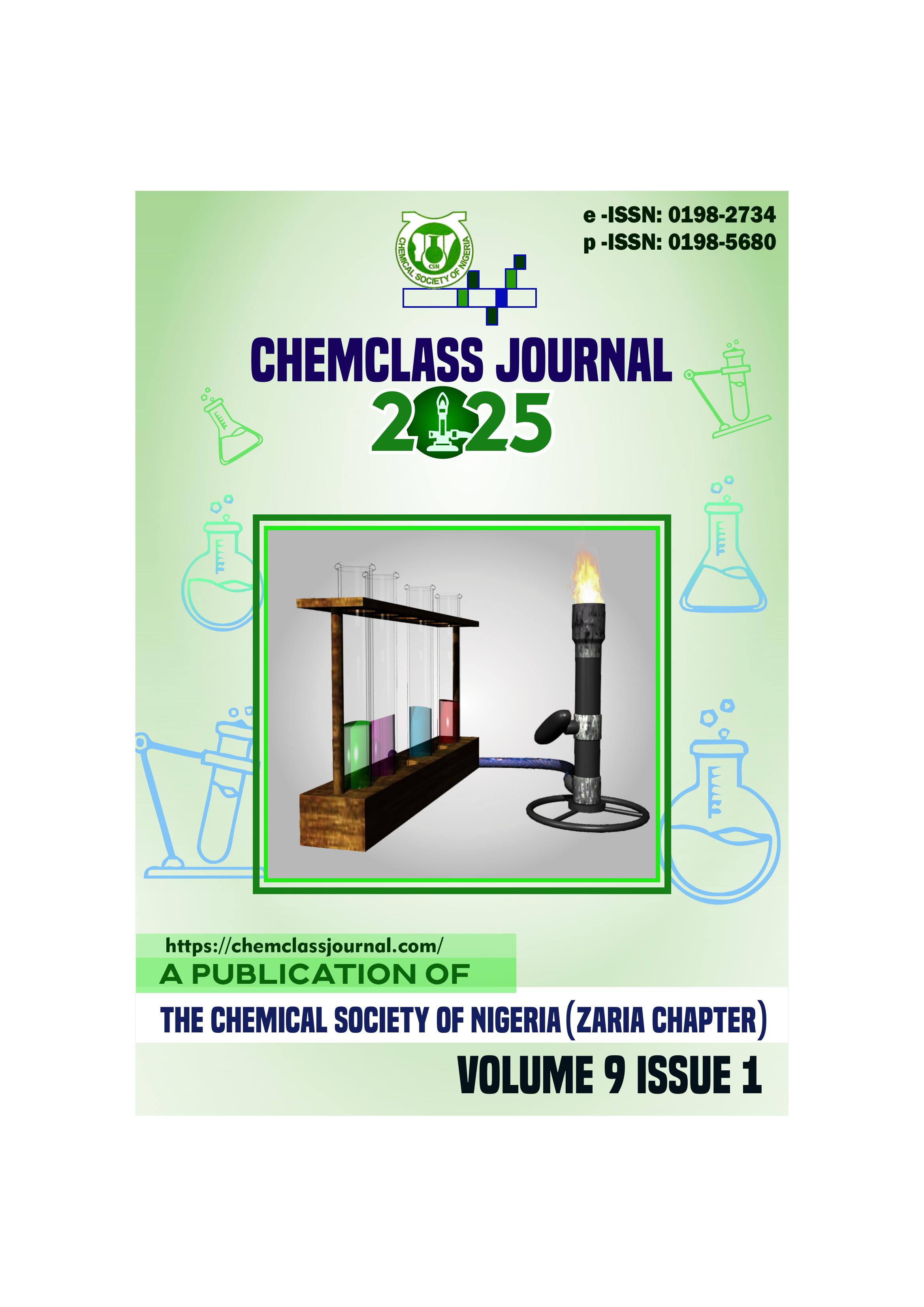Isolation and Characterization of Pheophytin B from Ethyl Acetate Extracts of Musa acuminata calla (Banana blossom)
DOI:
https://doi.org/10.33003/Keywords:
Bioactive compound , Chromatography , Diabetes , Extract , Musa acuminataAbstract
The research aims to isolate the secondary metabolites in order to discover the bioactive compound(s)
present. Banana blossom was extracted using ethyl acetate as solvent. The crude extract was subjected to
isolation using column chromatography. Fractions obtains were collected from the column and subjected
to thin layer chromatography to confirm their purity for separation of the component combination by
applying a thin stationary phase supported by an inert backing, yielding BF 59 fraction. The fraction BF
59 was characterized using FTIR, NMR and HR-LCMS. Results of FTIR analysis show absorption bands
at 2929.80, that is characteristic of N‐H stretching. Absorption at 970.52 is due to cyclic olefinic –HC=
CH- structure, 1683.18 is a bending frequency for C=O, 2335.00 is a bending frequency for O=C-O and
2861.87 assigned to C-H structure. 1451.24 is a bending frequency for cyclic CH3 and 2861.87 for –CH.
The absorption frequency at 724.02.22 is typical of aromatic. The 1H NMR spectrum was typical of a
pheophorbide derivative with a phytol chain. The spectrum showed four deshielded protons at δH11.06(1H,
s), 10.26(1H, s), 9.53(1H, s) and 8.56(1H, s) and two methyls between 3.00~4.00 ppm. The rest of the
protons were for other methyl groups and methine as well as methylene protons. The 13C NMR spectrum
gave 55 carbon signals including an aldehyde carbonyl carbon at δC187.63, and ester carbonyl carbons at
174.0, 170.7, and 169.0. There were also C=N carbons at 159.0, 146.5 and 163.1 indicating the presence of
a porphyrin group and possibly a pheophytin class of compound. Based on these correlations and
comparison with literature data, fraction BF-59 was identified as pheophytin B. The HR-LCMS revealed a
quasi-molecular ion [M+H]+ at m/z885.5554 (Calc. 885.5530), indicating a molecular formula of
C55H72O6N4. Findings from the study established the isolation of pheophytin B from Musa acuminata calla
that provide a scientific rationale for the plant part as a potential source of antimicrobial agent which in turn
contribute to drug discovery and development in the pharmaceutical sector





 ChemClass Journal
ChemClass Journal
